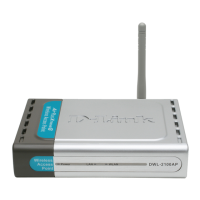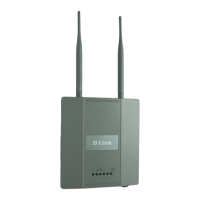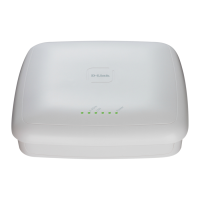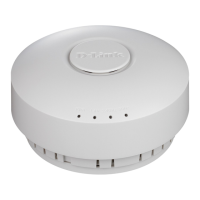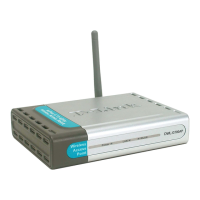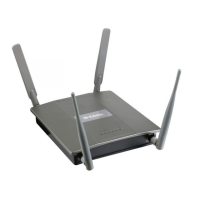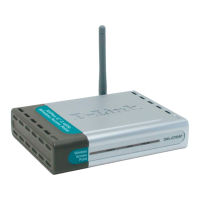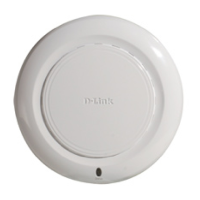Defining SNMP Parameters
D-Link Unified Wired and Wireless Access System
Oct. 2015 Page 128
D-Link UWS User Manual
If you make any changes to the page, click Submit to apply the changes to the system. If you want the switch
to retain the new values across a power cycle, you must perform a save.
Trap Flags
Use the Trap Flags page to enable or disable traps at a component level that the switch can send to an SNMP
manager. When the condition identified by an active trap is encountered by the switch, a trap message is sent
to any enabled SNMP Trap Receivers, and a message is written to the trap log. If the component level trap flag
is disabled, then no trap is sent to the SNMP Manager even if the individual traps in that component are
enabled.
To access the Trap Flags page, click LAN > Administration > SNMP Manager > Trap Flags page.
Table 45: Trap Receiver Configuration Fields
Field Description
SNMP Trap Name Select Create, to configure the SNMP trap name for the SNMP trap packet to
be sent to the trap manager.
If you have already configured an SNMP trap name, you can select it from the
drop-down menu to change the settings or delete it.
SNMP Trap Name When the previous field is set to Create, enter the SNMP trap name for the
SNMP trap packet to be sent to the trap manager. This may be up to 16
characters and is case sensitive.
SNMP Version Select the trap version to be used by the receiver from the pull down menu:
• SNMP v1. Uses SNMP v1 to send traps to the receiver.
• SNMP v2. Uses SNMP v2 to send traps to the receiver.
Protocol Select the type of protocol used for the SNMP Trap Receiver Configuration:
• IPv4. Choose IPv4 to enter the address in IPv4 format.
• IPv6. Choose IPv6 to enter the address in IPv6 format.
IP Address/Host Name Enter the IP address in dotted-decimal format of the system that receives
SNMP traps from the switch. Alternatively, you can enter the hostname of the
trap receiver
Status Select the receiver's status from the pulldown menu:
• Enable: Send traps to the receiver
• Disable: Do not send traps to the receiver.
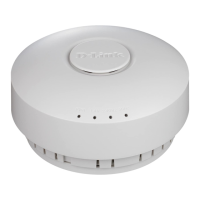
